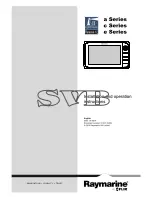
Seite 2 von 45
Preface
One of our prime objectives as a Swiss company is the development and manufacturing of
precise and reliable products for physical therapy based on years of experience. Some of
our products are well known and utilized internationally. As a small company we can afford
to keep in touch with our customers who often contribute to new developments.
May your work with the
F-SCAN2
be beneficial for you and for your clients.
Introduction
The FREQUENCY SYNTHESIZER
F-SCAN2
has been optimized for stationary as well as
‘out of office’ use by medical professionals and healing practitioners. The device advances
and expands the range of applications originally defined by its predecessor, the F-SCAN.
The units touch screen display can be tilted within 90 degrees. Itresponds quickly to
commands and is easy to operate.
The device generates precise SINE wave signals (DC-OFFSET) and SQUARE wave
signals (FULL WAVE or DC-OFFSET) and feeds them to a single OUTPUT connector.
A separate POWER PORT
provides amplified signals synchronized with the signals
available on the OUTPUT port for use with light or magnetic coil adapters, etc.
The AMPLITUDE of the sine wave signals is preset. The amplitude of the square wave
signals can be individually adjusted in a broad range.
A TIMER can be assigned individually to each frequency or as a global function.
The special application modes “
WOBBLE
” and “
PULSE
” are global functions. If enabled,
they affect all frequencies used in an application.
A “
S
weep
T
o
N
ext” mode allows a sweep between two adjacent values in a sequence of
frequencies.
The unique
DIRP
(
D
ual
I
ntegration
R
esonance
P
rocedure) can be used to SCAN FOR
RESONANT FREQUENCIES in the unit’s frequency band between 1Hz and
15,000,000Hz. The sensitivity of the analysis function can be adjusted from the default
value of “L”=Low to “M”=Medium or “H”=High.
A WIDE BAND
SWEEP
can be performed.
A
ZAPPER
session is preprogrammed and can be started with a touch on the ZAPPER
icon.
All functions are controlled by a microprocessor. The built-in permanent (non volatile)
memory contains a list of the 235 pathogens identified by Dr. Hulda R. CLARK (called
CLARK table in this document) with their typical frequencies as well as a list of 348 low
frequency applications (called RIFE table in this document).



































